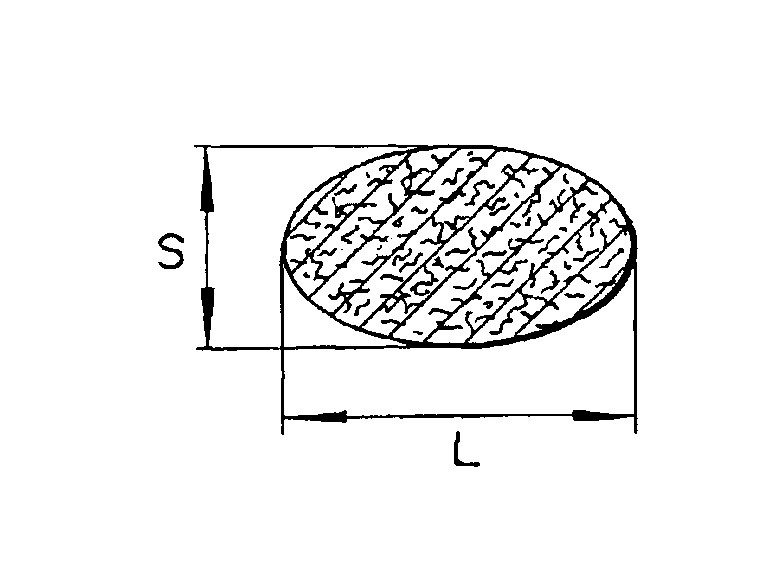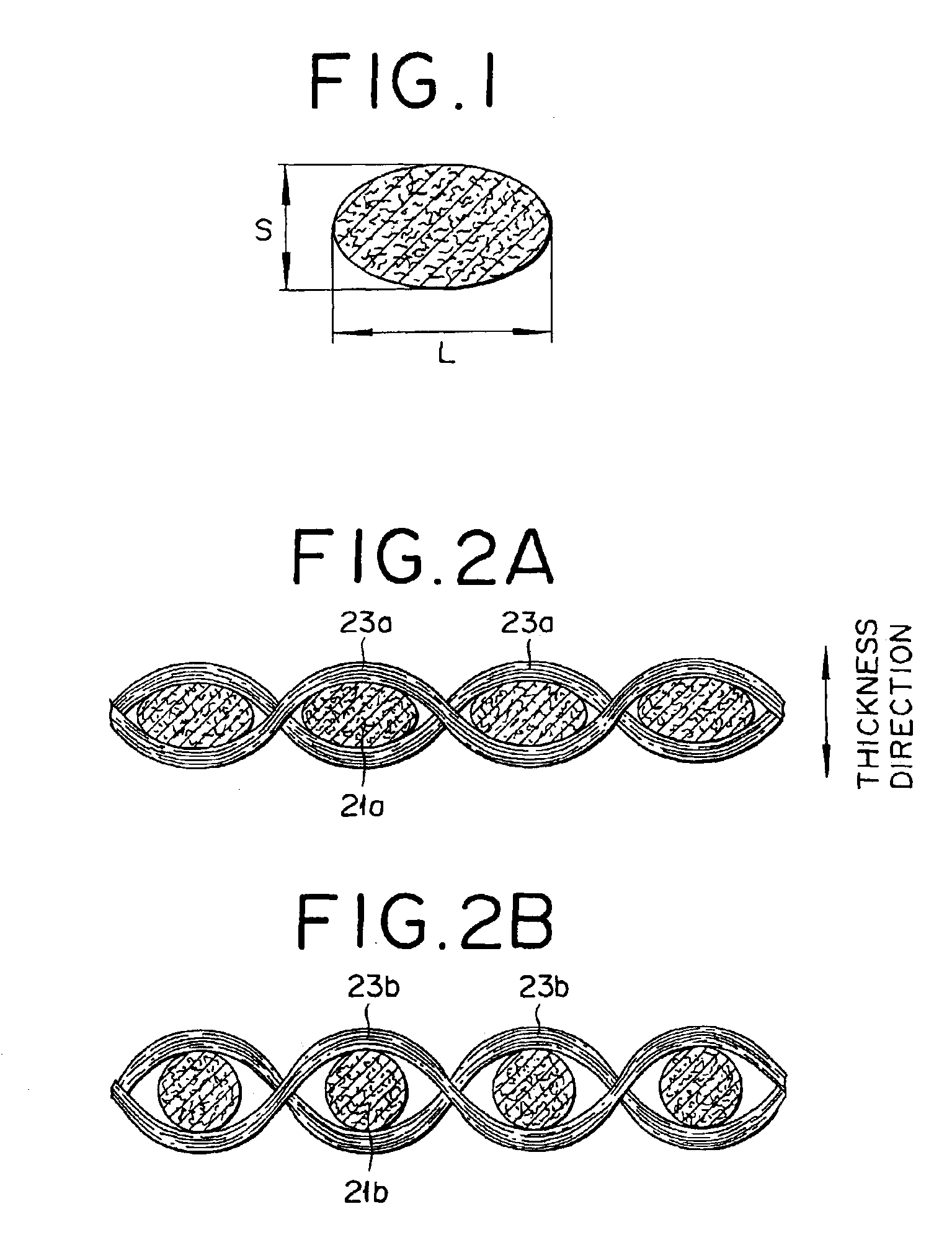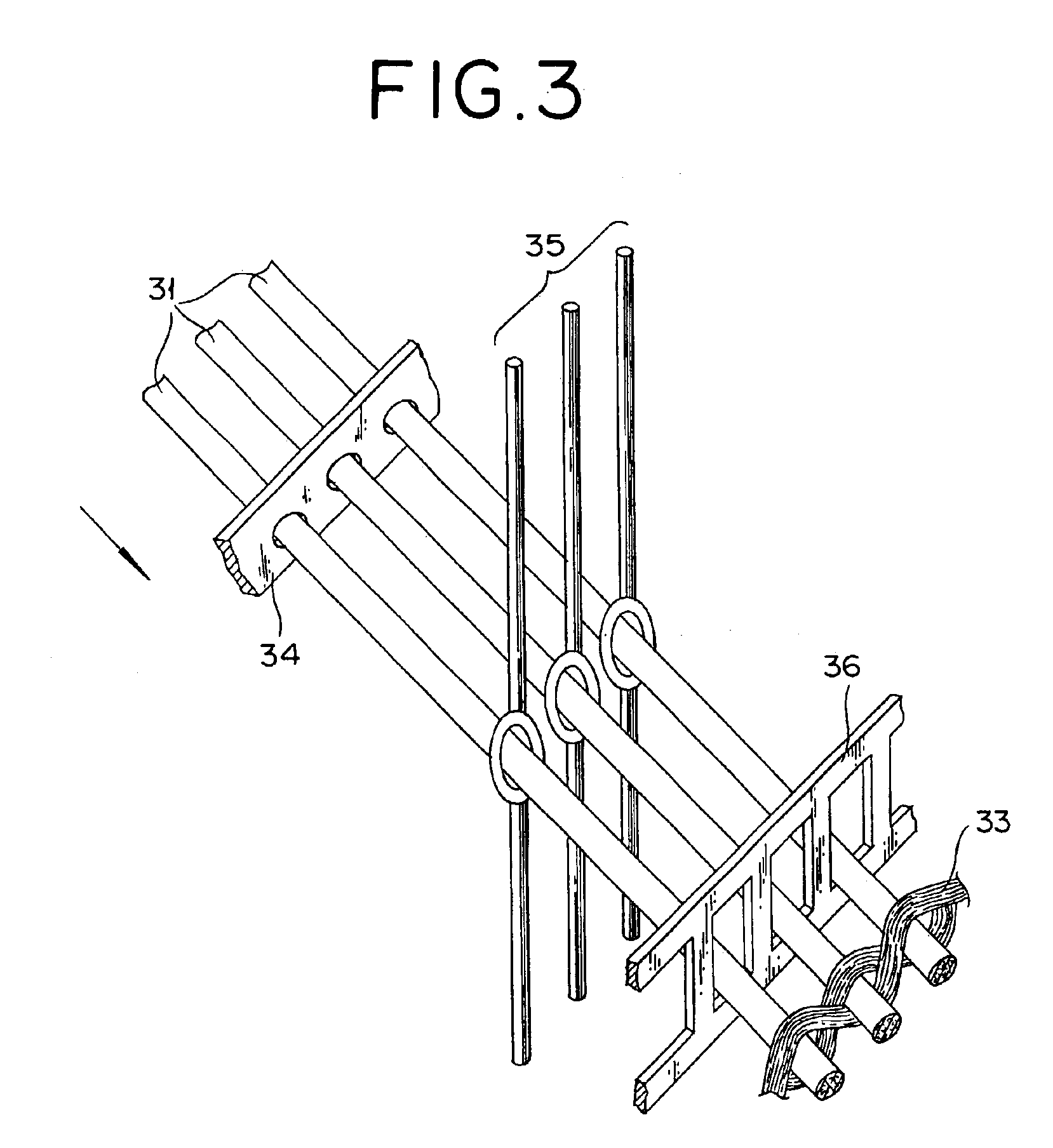Woven tubing for stent type blood vascular prosthesis and stent type blood vascular prosthesis using the tubing
a stent type and vascular prosthesis technology, applied in the field of woven tubing for stent type blood vascular prosthesis using the woven tubing, can solve the problems of reducing the stent type vascular prosthesis, reducing the vascular vascular vascular vascular vascular vascular vascular vascular vascular vascular vascular vascular vascular vascular vascular vascular vascular vascular vascular vascular vascular vascular vascular
- Summary
- Abstract
- Description
- Claims
- Application Information
AI Technical Summary
Benefits of technology
Problems solved by technology
Method used
Image
Examples
example 1
[0060]A tubing measuring 24 mm in inside diameter and having a plain weave design was formed by hollow weave using a monofilament of polyethylene terephthalate having an elliptic cross section, a flattening of 1.2 and a size of 33 dtex (the present monofilament) for warps and a multifilament of polyethylene terephthalate having a circular sectional shape of single filament, a flattening of single filament of 1.0, and a single filament size of 0.55 dtex, formed of 170 single filaments to a total size of 94 dtex, and endowed with a twist multiplier of 200 times / meter for wefts. The tubing was subjected to a crimping treatment to obtain a target WTVP.
example 2
[0061]A target WTVP was obtained by repeating the procedure of Example 1, except that a monofilament of polyethylene terephthalate having an elliptic sectional shape and a flattening of 2.0 and a size of 33 dtex (the present monofilament) was used for warps.
example 3
[0062]A target WTVP was obtained by repeating the procedure of Example 1, except that a monofilament of polyethylene terephthalate having an elliptic sectional shape and a flattening of 5.0 and a size of 33 dtex (the present monofilament) was used for warps.
PUM
 Login to View More
Login to View More Abstract
Description
Claims
Application Information
 Login to View More
Login to View More - R&D
- Intellectual Property
- Life Sciences
- Materials
- Tech Scout
- Unparalleled Data Quality
- Higher Quality Content
- 60% Fewer Hallucinations
Browse by: Latest US Patents, China's latest patents, Technical Efficacy Thesaurus, Application Domain, Technology Topic, Popular Technical Reports.
© 2025 PatSnap. All rights reserved.Legal|Privacy policy|Modern Slavery Act Transparency Statement|Sitemap|About US| Contact US: help@patsnap.com



